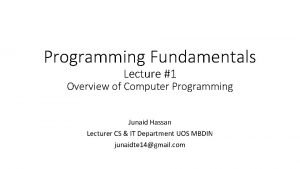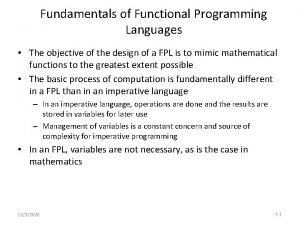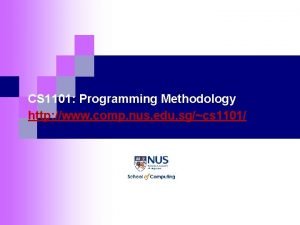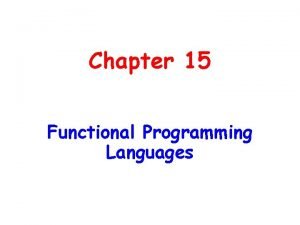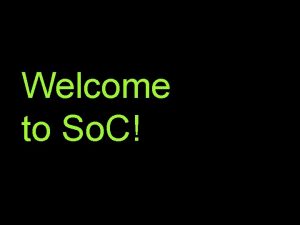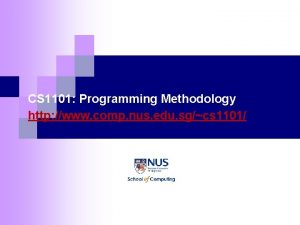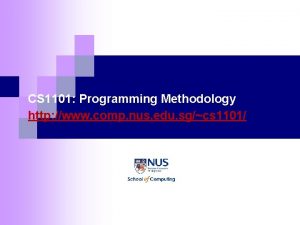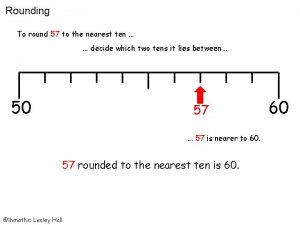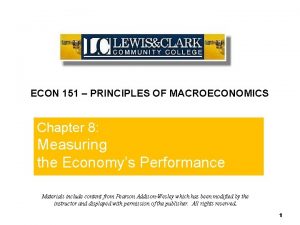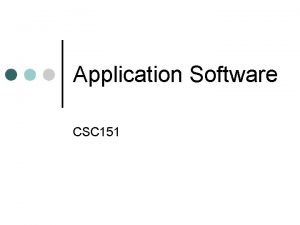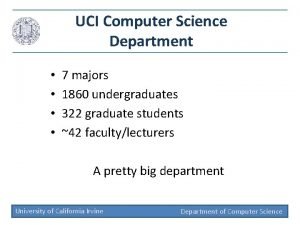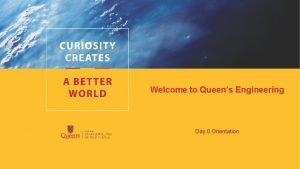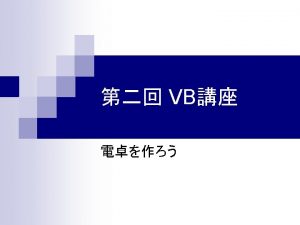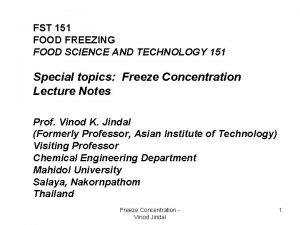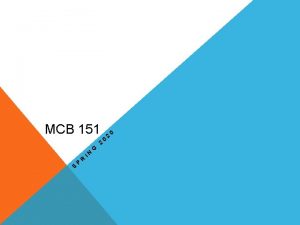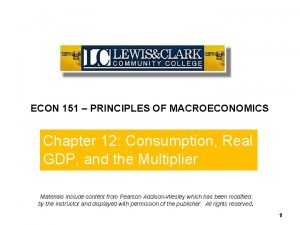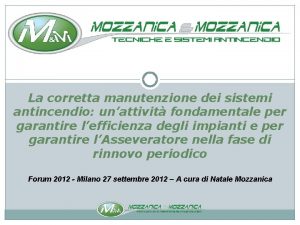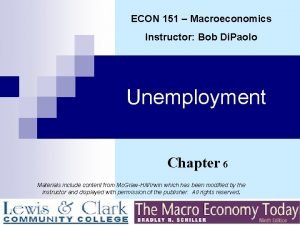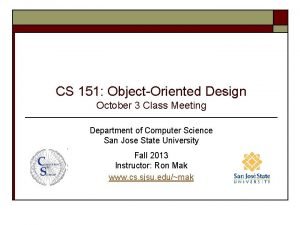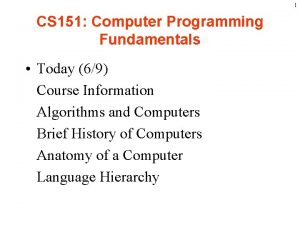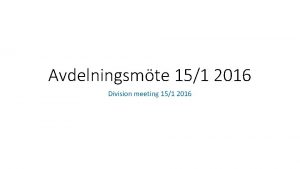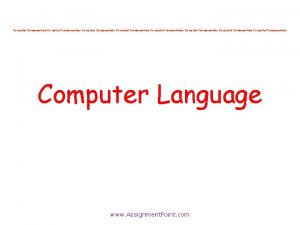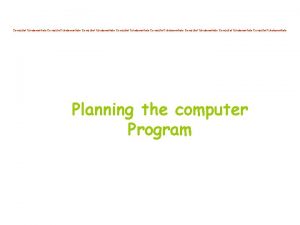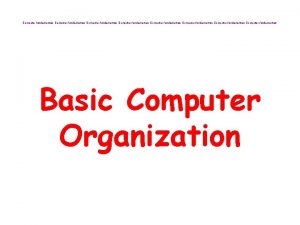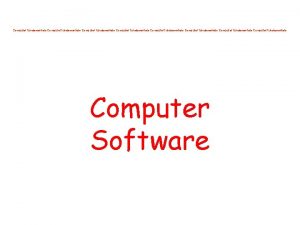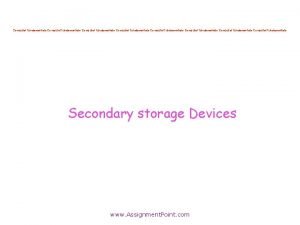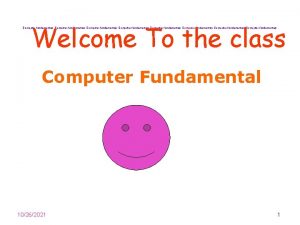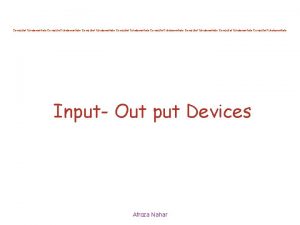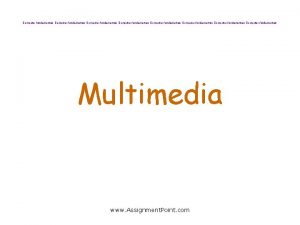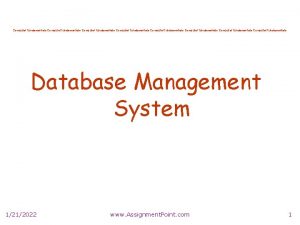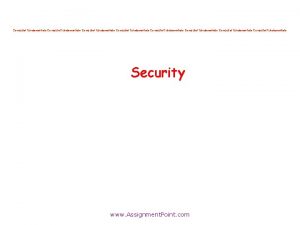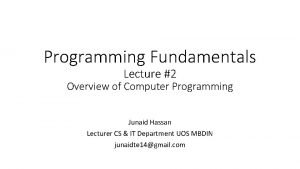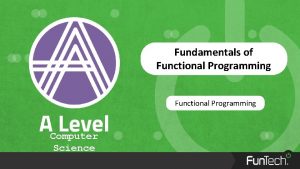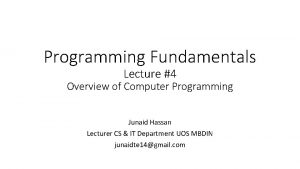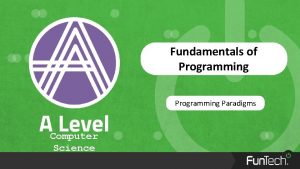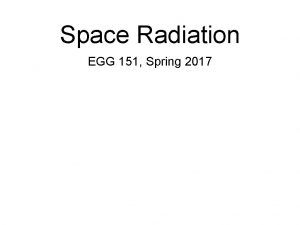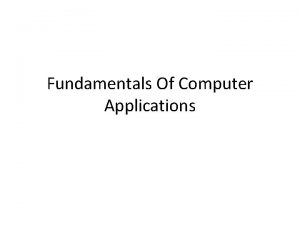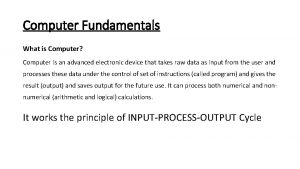1 CS 151 Computer Programming Fundamentals Today 69
































- Slides: 32

1 CS 151: Computer Programming Fundamentals • Today (6/9) Course Information Algorithms and Computers Brief History of Computers Anatomy of a Computer Language Hierarchy

2 Course Information • • website: www. unm. edu/~mfricke mailing list: cs 151@cs. unm. edu Use CIRT AIX machines (xwin 32) Emacs with g++ will be the official development environment • Summer courses are very intensive

3 Current Assignments • Homework 1 has been posted. Variables, mathematical and logical operators, input/output, and the “if” operator. Due in one week (June 16 th) at midnight. • Project 1 has been posted. Write a binomial root solver using the quadratic equation. Due in two weeks (June 23 rd) at midnight.

Programs and Algorithms • Algorithm: a series of abstract steps that solve a particular problem – Mathematics – Food Recipes – Textile Weaving 4

5 Programs and Algorithms • Computer (idealized definition): anything capable of following the steps of an algorithm • Universal computer: a computer capable of following the steps of all possible algorithms • Program: the encoding of an algorithm so that a computer can follow the steps

6 The First Computers 14 th Century Counting Tables A 20 th Century Computer Center

7 Napier’s Bones and the Calculating Clock

8 Baron Gottlieb Leibniz The “Step Reckoner, ” 1671

Charles Babbage's Analytical Steam Engine Designed in the 1830 s, not built until 1906 9

10 Countess Ada Lovelace Program for generating Bernoulli Numbers (1842)

11 Alan Turing (1936)

12 The Z 3 built by Konrad Zuze in Berlin 1941

13

Von Neumann Architecture • Johann Von Neumann popularized the Stored Program computer. • Previous computers (like the COLLOSUS and ENIAC) had the program literally wired in. • The Z 3 had its program on punch tape. • Stored program computers made changing the algorithm a computer was to execute trivial. (compared to rewiring it!) • It also meant that the sequence of execution could be changed while the program was running. 14

Anatomy of a Computer • Six logical units of modern computers – Input (Keyboard, mouse, etc) – Output (Monitor, Printer, etc) – Volatile Memory (RAM or main memory) – Long term Memory (Disk, punch tape, etc) – Central Processing Unit (Processor) – Arithmetic and Logic Unit (Processor) (+ Bus, pipeline so all the other units can communicate) 15

16 Basic Organization of a Modern Computer CPU ALU Bus I/O Instructions Data Programs Memory

Anatomy of a Computer - Volatile Memory • Volatile memory (RAM) consists of numerous (typically millions or billions) of binary digits (“bits”). • A bit can hold the value 1 (the bit is set) or zero (the bit is unset). • A collection of eight bits can have 256 different states and so can be used to represent different things. For example 256 different characters (A, B, C, … a, b, c, … &, *, $) can be represented with a single byte by defining each different sequence of 1 s and 0 s to represent a different character. 17

18 Anatomy of a Computer - Volatile Memory • In memory all these bits have to be organized in such a way that we can find them when we want them. • Memory is divided up into “words, ” each word is typically two bytes (16 bits).

19 Anatomy of a Computer - Volatile Memory • There are other terms for various numbers of bits – for example, half a byte (4 bits) is a nibble, four bytes are called a “long” or a “dword” (double word), 1024 bytes is a kilobyte. • The more bits a division has the more states it can represent but the more memory it uses.

20 Anatomy of a Computer - CPU • The CPU has several local “registers. ” Registers are memory locations just like RAM. • The CPU is able to “fetch” values from RAM and place them into its registers. • Data in the registers can then be operated on by the ALU and CPU.

21 Anatomy of a Computer - CPU • The job then of the CPU is to load words into its registers from RAM, perform some operation on the registers and then store the result back into RAM. • Simply, the list of instructions that tell the processor what data to load and what operations to perform is a computer program.

22 Anatomy of a Computer – ALU • The ALU contains arithmetic and logic circuits which allow it to perform simple operations on data bits such as addition, multiplication, equality, etc.

23 Anatomy of a Computer • Secondary storage is mapped out in much the same way as main memory (RAM). The media for storing the bits is non-volatile and so does not need constant power. This is where we save our programs when they are not running. • Input devices can be as diverse as keyboards, scanners, and temperature sensors. • Output devices are typically monitors, sound cards, and printers. • Many devices are used for both input and output, such as network cards.

24 Languages – Machine Language • Every CPU has a list of actions that it is capable of performing (the instruction set). • These instructions must be given to the CPU in binary code for it to understand them. • A typical instruction might be: 00000001 01100101 10010010 01

25 Languages – Machine Language, cont A typical instruction might be: 00000001 01100101 10010010 01 Where 00000001 means “load” (copy), “ 01100101 10010010” is the address of a word in memory, and 01 is the address of a register. So this instruction tells the computer to load the value held at a certain address into the first register.

26 Languages - Assembly Language Machine language was too difficult to work with so programmers added a layer of abstraction. They wrote programs to translate keywords into the appropriate machine language. Now they could write “load 77 E 814 F 1 esi” and the “assembler” would translate the code into the 1 s and 0 s of machine language. Typical commands are things like load, add, jump, add 1, poke, and, xor, etc.

Languages – Assembly Language Typical snapshot of assembly language on a Pentium IV Address 77 E 814 EE 77 E 814 F 1 77 E 814 F 8 77 E 814 FB 77 E 81500 77 E 81501 77 E 81503 77 E 81505 77 E 81506 Instruction mov add jmp push xor cmp push Register or RAM Address esi, dword ptr [edi+8] dword ptr [ebp+64 h], 0 Ah esi, 4 Ah 77 E 7 E 91 A ebx, ebx ecx, ebx esi edi 27

28 Languages – High Level Languages • A lot of sophisticated software was written using machine and assembly language but it was still too difficult to understand. • High level languages have added a further level of abstraction such that a single command in Fortran, Java, or C++ might be translated into hundreds or thousands of assembly language instructions.

29 Languages – High Level Languages • High level languages also allow the programmer to define new commands in terms of old ones. • This means that most high level languages are unlimited in expressive power and in their potential to abstract away complexity. • Once you have one high level language it become easy to use it to write other high level languages.

30 Languages - High Level Languages • The first high level language was created by John Backus at IBM, in 1954. • It was originally called Speed. Coding but later the name was changed to the Formula Translation Language or Fortran. • In 1958 John Mc. Carthy developed the List Processing Language or Lisp. Algol, Fortran III, Flow-Matic which became Cobol all came out the same year. • There are now well over 200 major high level programming languages in 26 different groups.

31 A Brief History of High Level Languages • C – Evolved from two other programming languages • BCPL and B – “Typeless” languages – Dennis Ritchie (Bell Laboratories) • Added data typing, other features – Development language of UNIX – Hardware independent • Portable programs – 1989: ANSI standard – 1990: ANSI and ISO standard published • ANSI/ISO 9899: 1990

32 A Brief History of High Level Languages • History of C++ – – Extension of C Early 1980 s: Bjarne Stroustrup (Bell Laboratories) “Spruces up” C Provides capabilities for object-oriented programming • Objects: reusable software components – Model items in real world • Object-oriented programs – Easy to understand, correct and modify – Hybrid language • C-like style • Object-oriented style • Both
 Fundamentals of programming 1
Fundamentals of programming 1 Take charge today the fundamentals of investing
Take charge today the fundamentals of investing For today's meeting
For today's meeting We are going today
We are going today Meeting objective
Meeting objective Fingerprint ridge characteristics worksheet
Fingerprint ridge characteristics worksheet Today's lesson or today lesson
Today's lesson or today lesson Today's lesson or today lesson
Today's lesson or today lesson Functional programming fundamentals
Functional programming fundamentals Cs 1101 programming fundamentals final exam
Cs 1101 programming fundamentals final exam Fundamentals of functional programming language
Fundamentals of functional programming language Fundamentals of patrolling
Fundamentals of patrolling Cs-1101
Cs-1101 Cs 1101 programming fundamentals
Cs 1101 programming fundamentals Cs 1101 programming fundamentals
Cs 1101 programming fundamentals Round 151 to the nearest hundred
Round 151 to the nearest hundred Chemistry 151 final exam
Chemistry 151 final exam Model-netics 151 models
Model-netics 151 models Conforme a tua infinita graça numero
Conforme a tua infinita graça numero Econ 151
Econ 151 Mass produced copyrighted retail software
Mass produced copyrighted retail software 118/151
118/151 Cs 121 uci
Cs 121 uci Tổng kết vốn từ 151
Tổng kết vốn từ 151 Item 151
Item 151 Alan ableson queens
Alan ableson queens 1,151,725 bytes
1,151,725 bytes 151 food
151 food Mcb 151
Mcb 151 The equilibrium level of real gdp
The equilibrium level of real gdp Scia antincendio esempio
Scia antincendio esempio Econ 151
Econ 151 Sjsu cs 151
Sjsu cs 151
